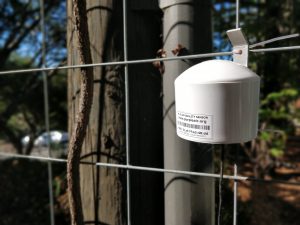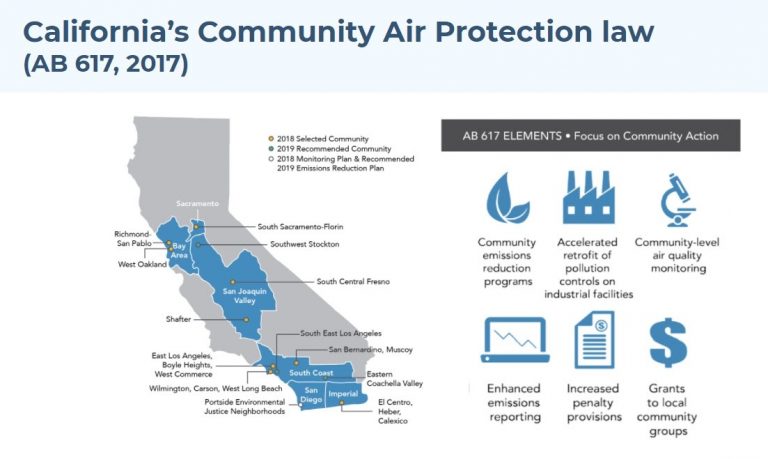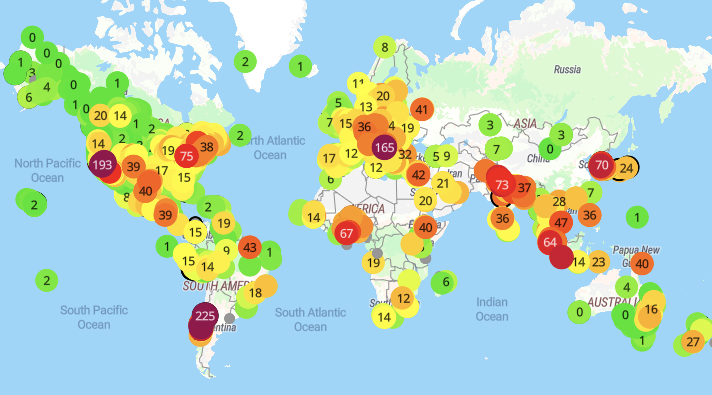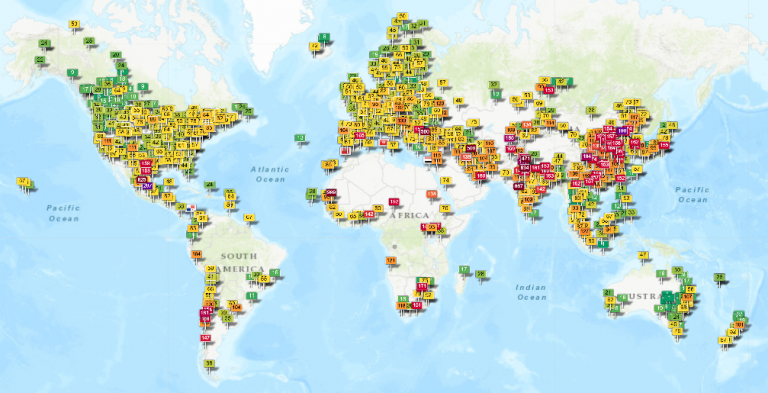Breathing Data

By Ellen Considine
Low-Cost Air Quality Sensors and Environmental Justice
Low-Cost AQ Sensors
In my third blog, I introduced low-cost air quality sensors as a way to help fill the gaps in traditional air quality monitoring. Federal reference or equivalence method (FRM or FEM) monitors, upon whose data regulatory decisions are most often based, cost tens of thousands of dollars and require substantial infrastructure and personnel to operate. By contrast, low-cost sensor prices typically fall in the $250 to $2,500 range. The tradeoff is that low-cost sensors produce less accurate data than reference monitors. Especially when tested in real-world settings instead of in a lab, there is a large range in accuracy (R-squared values basically spanning 0-1) for both particulate matter and gaseous sensors compared to reference measurements.

Low-cost particulate matter sensor. Source: OurAir.org.
In recent years, many institutions, agencies, and organizations have invested in low-cost sensors and developed tools with which the public can see air quality in real time. I have included links to some notable projects from the US, UK, Uganda, and Germany at the end of this post.
At the municipal level, site-specific air quality information (either from stationary or mobile sensors) can help with decision making about outdoor events (especially important for protecting children’s health), regular communication of risks to locals (e.g. by using phone alerts and/or a colored flag system), and identification of pollution hotspots, which is critical for developing targeted interventions to clean up the air and in advocating for environmental justice. Additionally, many governments require local air quality measurements and epidemiological research as the impetus to establish or tighten regulations. Low-cost sensors can help to fill this void, either by providing air quality data (if their accuracy is accepted) or by identifying locations where FRM / FEM monitors are most needed.
One program from the US to highlight is that established by California’s Assembly Bill (AB) 617 in 2017. This program provides funding for low-cost sensors to be deployed in disadvantaged communities and empowers these communities directly in the regulatory process to create legally-binding roadmaps for addressing local air pollution.

Image from Clarity blog (linked at end of post)
I will discuss AB 617 more in a subsequent blog, exploring relationships between policies affecting climate change, air quality, and health. For now, let’s note that AB 617 serves as a prominent example for the Biden administration as they propose allocating $100 million for a new community air quality monitoring and notification program.
Among the most popular (cheap and relatively accurate) types of low-cost particulate matter sensors is that developed by PurpleAir. Here is a screenshot of global PM2.5 from the PurpleAir map, taken on June 7, 2021. If you explore using this map, note the units in the box at the bottom left: Air Quality Index (AQI) and raw particulate matter (PM) are not on the same scales.

Complications
You may notice that despite the potential for low-cost sensors to fill gaps in air quality measurements, the PurpleAir map looks pretty similar to the map of traditional FRM/FEM monitors that I showed in my third blog:

One reason for this is that awareness of the health consequences of air pollution as well as the resources and social/political will to support air quality monitoring tend to facilitate deployment of both regulatory monitors and low-cost sensors. Another reason is that without calibration to a local regulatory monitor, there is more room to doubt the measurements from low-cost sensors deployed in that area.
For example, it is well-known that PurpleAir (and other low-cost sensor) measurements are biased by high humidity. Other research has suggested differences in measurements depending on aerosol composition. Both of these factors vary widely across locations, and may be at least partially addressed by calibration with a nearby regulatory monitor. In a recent article, Christa Hasenkopf, Senior Air Quality and Energy Advisor for USAID and co-founder of OpenAQ, argued that investing in reference monitors in a few key countries where no data is currently being generated would be a very cost-effective way to help fill the global air quality data gap and reduce global air inequality.
Even within the US, low-cost sensors are not distributed equitably. A recent study found that PurpleAir sensors are disproportionately located in neighborhoods with higher incomes and those with higher percentages of white residents. Ongoing research investigates the implications of this discrepancy for science and policy.
Other challenges in using low-cost sensors to promote environmental justice (among other applications) include dealing with the lack of reliable electricity and wifi (to upload the data) in many lower-income areas, facilitating local leadership and broader community participation, and, as with all programs, obtaining long-term financial support to maintain both the technology and local awareness.
***
Low-Cost Sensor Programs and Visualization Examples:
- Love My Air, Denver (Colorado): About & AQ Dashboards
- Breathe London (United Kingdom): About & Real-time AQ Map
- IVAN Air Monitoring (Imperial Valley, California): About & Real-time AQ Map
- AirQo (Uganda): About & Real-time AQ Map
- Houston ACTS + Environmental Defense Fund (Texas): About
- Luftdaten Citizen Science (Germany): About & Real-time AQ Map
Recommended reading / listening:
- Atmospheric Tales Podcast: “Air Pollution in Ghana: Public Health Risk, Sources, and Low-Cost Sensors” (May 2020)
Like what you read?
More on Ellen Considine here.

